A gestão de resíduos plásticos tornou-se uma preocupação global. A crescente demanda por soluções sustentáveis aumentou a necessidade de equipamentos para reciclagem de plástico. Entre as máquinas essenciais no processamento de plástico estão: trituradores e peletizadores de plástico. Embora ambos desempenhem um papel na reciclagem, eles exercem funções diferentes.
Este artigo irá comparar trituradores de plástico vs. peletizadores, examinando seus princípios de funcionamento, aplicações, eficiência e como escolher o modelo certo para o seu negócio. Ao compreender suas diferenças, as empresas podem otimizar seus processos de reciclagem, reduzir o desperdício e aumentar a lucratividade.
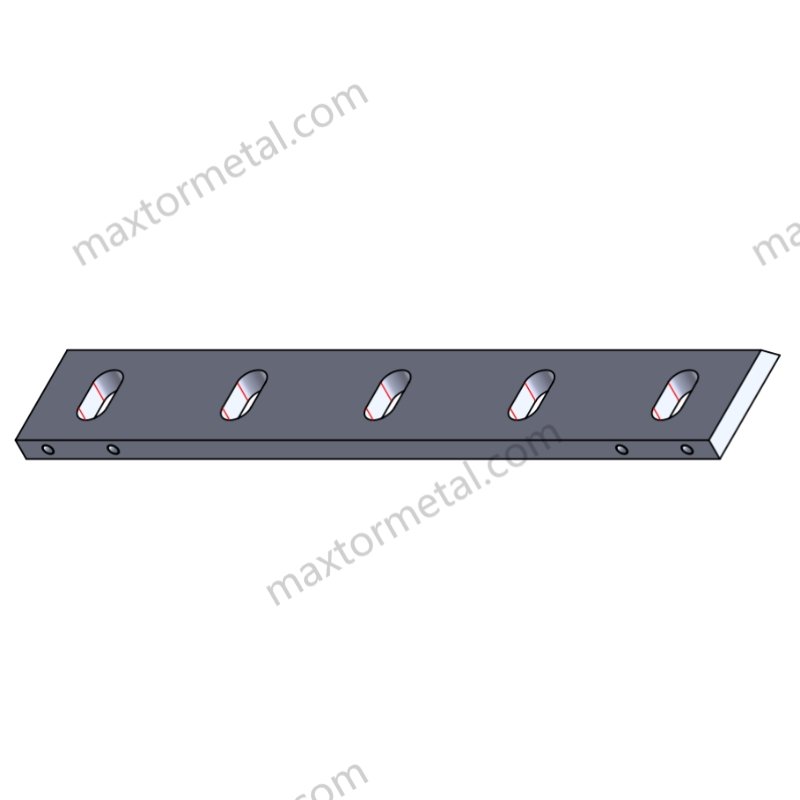
1. O que é um triturador de plástico?
1.1 Definição e Função
Um triturador de plástico, também chamado de triturador ou granulador de plástico, é uma máquina industrial projetada para reduzir o tamanho de resíduos plásticos cortando, cisalhando ou triturando materiais plásticos em fragmentos menores. É usada principalmente em equipamentos de reciclagem de plástico para facilitar o manuseio, o transporte e o processamento de resíduos plásticos.
Trituradores de plástico são cruciais tanto nos processos de reciclagem pós-consumo (PCR) quanto na reciclagem pós-industrial (PIR). Eles ajudam os fabricantes a recuperar plástico de produtos descartados, como garrafas PET, invólucros eletrônicos e componentes automotivos, reduzindo o desperdício em aterros sanitários e apoiando uma economia circular.
1.2 Princípio de funcionamento
Os trituradores de plástico funcionam quebrando mecanicamente os materiais plásticos usando lâminas ou facas rotativas. Os principais componentes incluem:
- Câmara de corte – Onde os resíduos plásticos são alimentados no triturador
- Lâminas rotativas e estacionárias – O mecanismo de corte que reduz o plástico em fragmentos menores
- Motor e sistema de acionamento – Alimenta a rotação da lâmina
- Filtro de tela – Determina o tamanho final das partículas do plástico triturado
O processo de britagem depende de:
| Fator | Impacto no desempenho de britagem |
| Design da lâmina | Determina a eficiência de corte (lâminas retas, tipo V ou escalonadas) |
| Velocidade de corte | Afeta a produtividade e o tempo de processamento (britadores de alta velocidade vs. baixa velocidade) |
| Dureza do material | Impacta no consumo de energia e no desgaste das lâminas (plásticos macios vs. rígidos) |
Por exemplo, trituradores de alta velocidade (granuladores) são usados para filmes plásticos finos e plásticos macios, enquanto trituradores de baixa velocidade processam plásticos mais espessos e rígidos, como ABS ou policarbonato.
A eficiência de um triturador de plástico depende de vários fatores, incluindo:
- Afiação da lâmina – Uma lâmina cega aumenta o consumo de energia e reduz a eficiência
- Potência do motor – Determina a quantidade de plástico que pode ser processada por hora
- Método de alimentação – Alguns britadores usam funis alimentados por gravidade, enquanto outros usam sistemas de alimentação por correia transportadora
1.3 Aplicações
Trituradores de plástico são amplamente utilizados em diversos setores. Algumas aplicações comuns incluem:
| Indústria | Aplicação | Exemplos de resíduos plásticos |
| Bebidas e Embalagens | Reciclagem de garrafas plásticas | Garrafas de PET, jarras de leite de HDPE, recipientes para alimentos |
| Automotivo | Reciclagem de componentes de veículos | Para-choques, painéis de portas e painéis de automóveis |
| Eletrônica | Destruição de lixo eletrônico | Gabinetes de computador, teclados, invólucros de placas de circuito |
| Moldagem por injeção | Redução de desperdícios na produção | Rejeitos plásticos, sprues, canais |
| Industria têxtil | Reciclagem de fibras sintéticas | Tecidos de poliéster e náilon |
Algumas usinas de reciclagem avançadas integram trituradores de plástico antes da peletização para aumentar a eficiência. Ao reduzir primeiro o plástico em fragmentos menores, as peletizadoras podem operar com mais eficiência, resultando em pellets de plástico reciclado de maior qualidade.
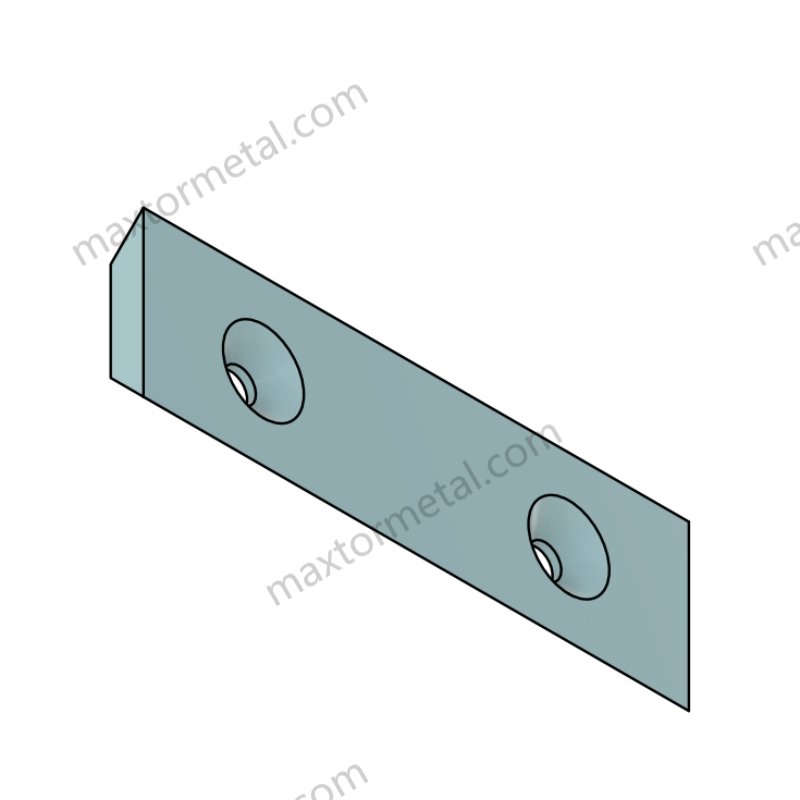
1.4 Projeto e otimização da lâmina
O desempenho de um triturador de plástico depende muito da qualidade e da configuração de suas lâminas ou facas. Diferentes materiais e designs oferecem diversas vantagens:
| Material da lâmina | Características | Melhor usado para |
| Aço para ferramentas D2 | Alta resistência ao desgaste, longa vida útil | Destruição geral de plástico |
| Ponta de carboneto de tungstênio | Dureza extrema, baixa manutenção | Operações de alto volume |
| Aço inoxidável | Resistência à corrosão | Aplicações de plástico de qualidade alimentar |
Outras considerações importantes para lâminas industriais personalizadas:
- Afiação da lâmina – Lâminas afiadas reduzem o consumo de energia e melhoram a eficiência
- Ângulo de corte – O ângulo reto minimiza o estresse e prolonga a vida útil da lâmina
- Arranjo de lâminas – Configurações escalonadas, tipo V ou helicoidais otimizam o desempenho de corte
Escolhendo lâminas ou facas de alta qualidade garante menor tempo de inatividade, custos de manutenção reduzidos e melhor eficiência de britagem.
2. O que é um peletizador de plástico?
2.1 Definição e Função
Um peletizador de plástico é uma máquina que converte resíduos plásticos, remoídos ou resina virgem em pellets pequenos e uniformes (grânulos de resina). Esses pellets servem como matéria-prima para novos produtos plásticos, tornando a peletização uma etapa crucial na reciclagem e na fabricação de plástico.
Os peletizadores de plástico aumentam o valor do plástico reciclado ao garantir tamanho, formato e propriedades de fluxo consistentes, tornando o material adequado para aplicações de extrusão, moldagem por injeção e moldagem por sopro.
2.2 Princípio de funcionamento
A peletização de plástico segue um processo de três etapas:
- Derretimento de plástico – O material plástico é alimentado em uma extrusora, onde é derretido por aquecedores e força de cisalhamento.
- Extrusão – O plástico derretido é empurrado através de uma matriz para formar fios contínuos.
- Corte – Os fios são cortados em pellets uniformes usando facas ou lâminas rotativas.
Existem diferentes métodos de peletização, cada um adequado para aplicações específicas:
| Método | Processo | Aplicações comuns |
| Pelotização de face de matriz quente | O plástico é cortado ao sair da matriz | Plásticos macios como PP, LDPE, EVA |
| Pelotização de Anel de Água | A água esfria e solidifica os pellets | Peletização de uso geral |
| Pelotização Subaquática | Os pellets se formam e esfriam debaixo d'água | Produção de alto rendimento |
Por exemplo, peletizadores subaquáticos são preferidos para plásticos de engenharia de alto desempenho, como náilon e PEEK, pois fornecem formato e resfriamento precisos dos pellets.
2.3 Aplicações
Os peletizadores de plástico são essenciais para indústrias como:
| Indústria | Aplicação de Pelotização | Material processado |
| Reciclagem de Filme Plástico | Processamento de resíduos pós-consumo | PEBD, PEBDL |
| Moldagem por injeção | Reutilização de sucata de produção | ABS, PP, PE |
| Extrusão de Tubos e Perfis | Produzindo grânulos de resina uniformes | PVC, PEAD |
| Composto | Criação de misturas plásticas especiais | Masterbatches, resinas retardantes de chama |
A qualidade das lâminas do peletizador afeta significativamente o formato do pellet, a uniformidade do tamanho e a lisura da superfície, o que por sua vez afeta a eficiência do processamento posterior.
2.4 Projeto de faca e rotor
Selecionando a faca ou lâmina certa é essencial para obter pellets de alta qualidade. As principais considerações incluem:
| Material da faca | Características | Melhor uso |
| Aço D2 | Resistente e econômico | Reciclagem geral |
| Revestido de carboneto | Dureza superior, longa vida útil | Aplicações de alto rendimento |
| Cerâmica | Durabilidade extrema | Plásticos de alta temperatura |
Além disso, o tipo de rotor afeta a qualidade do pellet:
- Rotores aparafusados – fáceis de manter, comuns para reciclagem geral
- Rotores de travamento em cunha – Proporcionam melhor estabilidade da faca, usados em peletização de alta precisão
O uso de lâminas industriais personalizadas para peletização pode melhorar a precisão de corte, a eficiência e a consistência dos pellets.
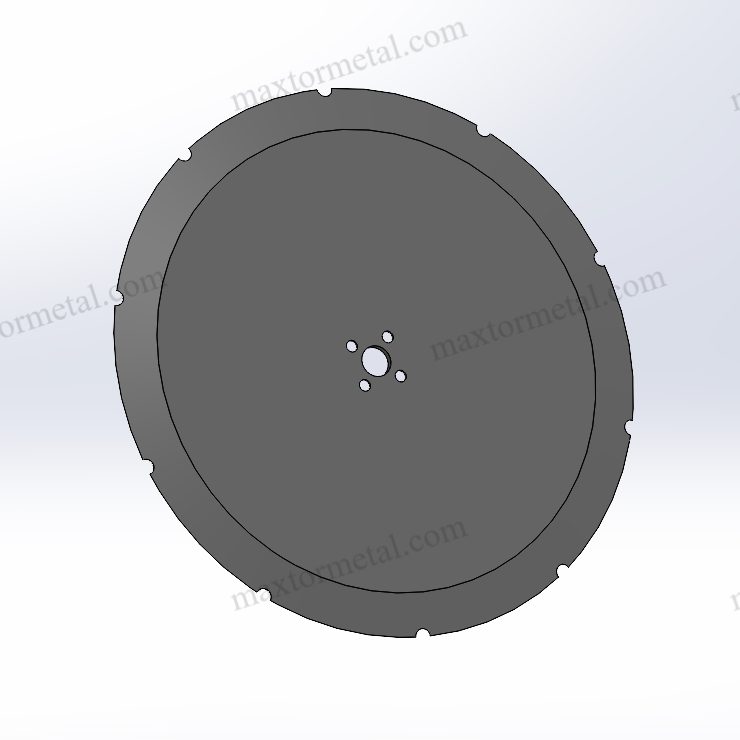
3. Triturador de plástico vs. peletizador: principais diferenças
3.1 Comparação de função e propósito
| Recurso | Triturador de plástico | Pelletizador de plástico |
| Função principal | Quebra o plástico em pedaços menores | Converte plástico em pellets reutilizáveis |
| Saída | Plástico triturado | Pelotas plásticas uniformes |
| Aplicação | Reciclagem, redução de resíduos | Fabricação, reprocessamento |
| Tipo de processamento | Corte mecânico | Extrusão e corte por calor |
3.2 Diferenças técnicas e operacionais
- Consumo de energia: Os peletizadores geralmente consomem mais energia devido ao aquecimento e à extrusão.
- Tempo de processamento: os trituradores funcionam instantaneamente, enquanto os peletizadores exigem aquecimento e resfriamento.
- Necessidades de manutenção: os trituradores exigem afiação regular das lâminas, enquanto os peletizadores exigem a substituição das facas.
3.3 Impacto Ambiental e de Eficiência
- Os trituradores reduzem o volume de resíduos plásticos, mas não os convertem em material reutilizável.
- Os peletizadores permitem que o plástico seja reutilizado na produção, mas exigem maior consumo de energia.
- A escolha depende se seu objetivo é redução de resíduos (triturador) ou reutilização de material (peletizador).
4. Como escolher o equipamento certo?
A escolha entre um britador de plástico e um peletizador depende de vários fatores, incluindo tipo de material, objetivos de processamento, eficiência energética e orçamento. Esta seção fornecerá uma análise aprofundada desses fatores, incluindo considerações técnicas, análise de custos, aplicações reais e soluções de lâminas personalizadas.
4.1 Selecionando um britador ou peletizador: principais considerações
Ao escolher entre um triturador de plástico e um peletizador, considere os seguintes fatores técnicos e operacionais:
1. Tipo de material plástico
| Tipo de plástico | Equipamento recomendado | Exemplos |
| Plásticos rígidos (PP, ABS, PC, HDPE, PVC) | Triturador | Para-choques de carros, canos, garrafas, teclados |
| Plásticos Flexíveis (PEBD, PEBDL, EVA, TPU) | Peletizador | Sacos plásticos, filmes, tubos |
| Resíduos Plásticos Mistos | Triturador → Peletizador | Resíduos pós-consumo, restos industriais |
- Os trituradores são melhores para plásticos duros que precisam de redução de tamanho antes do processamento posterior.
- Os peletizadores funcionam melhor com plásticos processáveis por fusão, cujo objetivo é criar pellets plásticos uniformes.
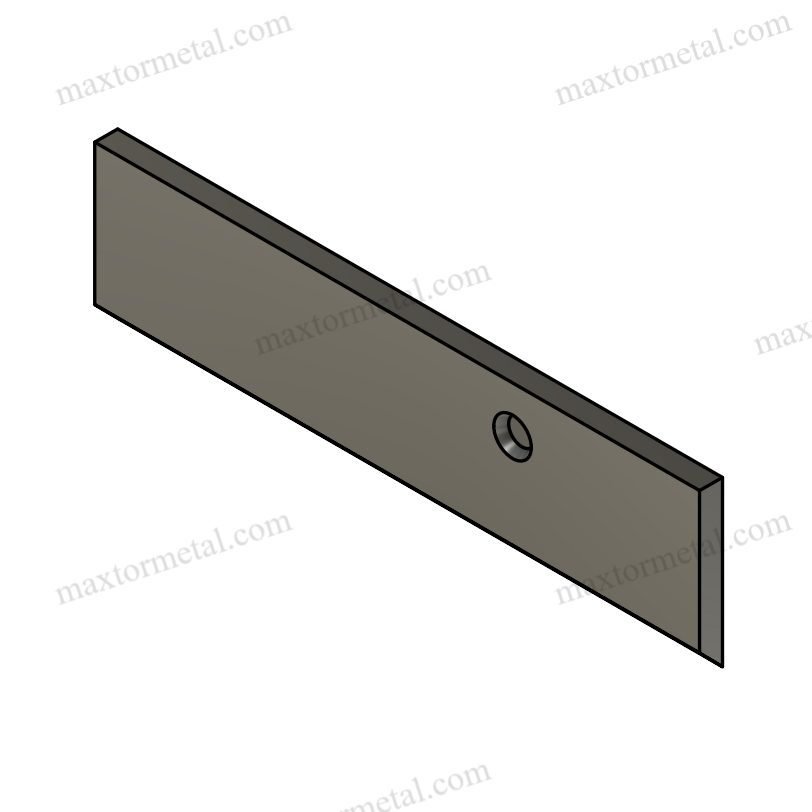
2. Objetivo de uso final
| Objetivo final | Melhor Equipamento | Por que? |
| Redução de Resíduos | Triturador | Reduz o volume, facilita o armazenamento e o transporte |
| Reciclagem em novos produtos | Peletizador | Produz pellets de resina de alta qualidade para reutilização |
Por exemplo, uma instalação de reciclagem que coleta e processa apenas plásticos pós-consumo se beneficiará mais de trituradores para reduzir o volume. Um fabricante que cria móveis de plástico reciclado precisa de um peletizador para produzir pellets de resina uniformes para moldagem.
3. Eficiência de processamento e consumo de energia
| Fator | Triturador de plástico | Pelletizador de plástico |
| Velocidade de processamento | Mais rápido (redução imediata do tamanho) | Mais lento (requer fusão e extrusão) |
| Consumo de energia | Mais baixo | Mais alto |
| Requisitos de manutenção | Afiação regular de lâminas | Limpeza frequente da cabeça de matriz e substituição da faca |
Um britador consome menos energia porque apenas corta e tritura plástico. Já um peletizador requer aquecimento, extrusão e corte, o que o torna uma máquina com maior consumo de energia.
4.2 Análise de Custo e ROI
Investir em equipamentos de reciclagem de plástico requer uma análise do investimento inicial, dos custos operacionais e do retorno sobre o investimento (ROI) a longo prazo.
Custos de Investimento Inicial
| Equipamento | Faixa de custo médio (USD) | Custos adicionais |
| Triturador de plástico | $5.000 – $50.000 | Substituição de lâminas, manutenção de motores |
| Pelletizador de plástico | $20.000 – $300.000 | Extrusora, placas de matriz, sistemas de resfriamento |
- Os britadores têm custos iniciais mais baixos, mas exigem substituições frequentes das lâminas.
- Os peletizadores têm custos iniciais mais altos, mas geram resultados de maior valor (pellets de plástico).
Custos Operacionais e Eficiência
| Fator de custo | Triturador de plástico | Pelletizador de plástico |
| Consumo de energia | 15-50 kWh por tonelada | 100-300 kWh por tonelada |
| Necessidade de mão de obra | Baixo | Moderado a alto |
| Substituição de lâmina/faca | A cada 6-12 meses | A cada 3-6 meses |
| Custo de manutenção por ano | $2.000 – $10.000 | $10.000 – $50.000 |
Os trituradores exigem pouca manutenção e baixo consumo de energia, o que os torna ideais para a redução de resíduos. Os peletizadores exigem mais manutenção e energia, mas produzem pellets plásticos de alto valor que podem ser revendidos.
Comparação de ROI
| Métrica | Triturador de plástico | Pelletizador de plástico |
| Período de equilíbrio | 6-12 meses | 2-5 anos |
| Fonte de receita | Venda de plástico triturado | Venda de pellets reciclados de alta qualidade |
| Rentabilidade | Médio | Alto |
- Os trituradores de plástico proporcionam um rápido retorno sobre o investimento devido aos custos mais baixos.
- Os peletizadores de plástico geram maior receita, mas exigem uma estratégia de investimento de longo prazo.
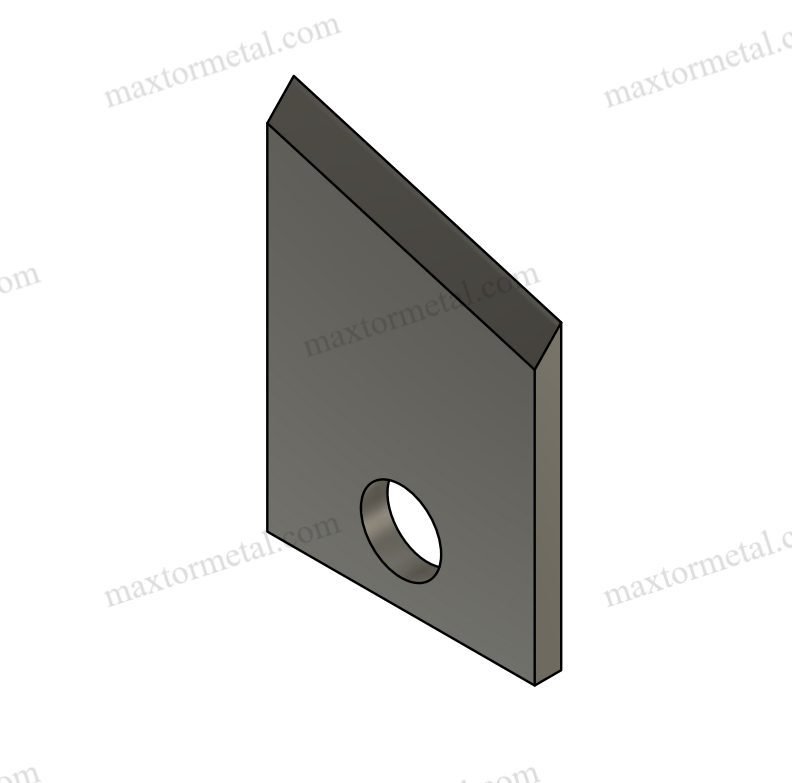
4.3 Aplicações do mundo real e estudos de caso
Estudo de caso 1: Usina de reciclagem com trituradores de plástico
Uma empresa de reciclagem de garrafas PET na Alemanha instalou trituradores industriais de plástico para processar 500 toneladas de resíduos plásticos por mês. Resultados:
- Redução dos custos de armazenamento de resíduos em 40%
- Eficiência aprimorada de movimentação de materiais pelo 60%
- Vendeu plástico triturado para fabricantes de pellets a $0,30 por kg
Estudo de caso 2: Fabricante que utiliza peletizadores de plástico
Uma empresa de móveis na China implementou um sistema de peletização para processar resíduos de PEBD. Resultados:
- Gerou 200 toneladas de pellets reciclados por mês
- Redução de custos de matéria-prima em 35%
- Aumento dos lucros anuais em $1,2 milhões
4.4 Soluções de lâmina personalizadas de Nanquim Metal
Nanquim Metal fornece lâminas e facas industriais personalizadas, projetadas para:
- Trituradores de plástico (lâminas de corte de alta velocidade, escalonadas e tipo V)
- Pellets de plástico (facas de corte de alta precisão e revestidas de carboneto)
Benefícios das soluções de lâminas personalizadas:
- Vida útil prolongada da lâmina (até 50% a mais em comparação com as lâminas padrão)
- Custos de substituição mais baixos
- Eficiência de corte melhorada
Para equipamentos de reciclagem de plástico de alto desempenho, é essencial selecionar o material e o design corretos da lâmina.
5. Tendências da indústria e desenvolvimento futuro
5.1 Automação e IA na Reciclagem de Plástico
- A classificação com tecnologia de IA melhora a separação de materiais em 30%, reduzindo a contaminação.
- Sistemas automatizados de monitoramento de lâminas detectam desgaste e otimizam cronogramas de substituição.
5.2 Revestimentos de lâmina avançados
- Revestimentos de carboneto de tungstênio aumentam a vida útil da faca em 3x.
- Revestimentos nanocerâmicos aumentam a resistência à corrosão em sistemas de peletização úmida.
5.3 Pelotização com eficiência energética
- Novas tecnologias de extrusora reduzem o consumo de energia em 20-30%.
- Os sistemas de pré-aquecimento infravermelho reduzem o tempo de aquecimento em 40%.
5.4 Regulamentações de sustentabilidade que impactam a indústria
- Os mandatos da UE exigem que 50% de embalagens plásticas sejam recicláveis até 2030.
- As leis dos EUA pressionam por maior conteúdo reciclado em bens de consumo.

6. Perguntas frequentes
6.1 Trituradores e peletizadores podem ser usados juntos?
Sim, muitas usinas de reciclagem primeiro trituram o plástico em flocos antes de peletizá-lo. Isso melhora a eficiência da peletizadora e reduz os custos de energia.
6.2 Como prolongar a vida útil da lâmina?
- Utilize lâminas industriais personalizadas de alta qualidade.
- Implemente cronogramas regulares de afiação e manutenção preventiva.
6.3 Como reduzir os custos de energia para peletização?
- Use aquecimento infravermelho em vez do aquecimento resistivo tradicional.
- Otimize o controle de temperatura da extrusora para eficiência energética.
6.4 Qual é o melhor equipamento para o meu negócio?
- Se você processa plásticos rígidos grandes, escolha um triturador.
- Se você precisa de material reciclado de alto valor, invista em um peletizador.
Tanto os trituradores de plástico quanto os peletizadores desempenham um papel crucial na reciclagem de plástico. A escolha do equipamento certo depende das suas necessidades específicas de processamento:
- Se seu objetivo é reduzir o volume de resíduos e facilitar o manuseio de materiais, um triturador de plástico é a escolha certa.
- Se você precisa de pellets plásticos reutilizáveis para fabricação, um peletizador é o melhor investimento.
No entanto, a eficiência, durabilidade e desempenho dessas máquinas dependem fortemente de lâminas e facas industriais de alta qualidade. Investir em lâminas industriais personalizadas não só garante maior eficiência de corte e maior vida útil, como também reduz os custos operacionais e o tempo de inatividade.
Procurando por lâminas trituradoras ou peletizadoras de alto desempenho? Contate-nos!
Na Nanjing Metal, somos especializados em lâminas industriais personalizadas projetado para trituradores e peletizadores de plástico.
Referências
· Atualização sobre reciclagem de plásticos (2024). Tendências globais em gestão de resíduos plásticos.
· Relatório de Pesquisa de Mercado (2023). Eficiência Energética em Equipamentos de Processamento de Plástico.
· Notícias Europeias sobre Plásticos (2022). Melhores práticas para peletização de plásticos reciclados.



3 respostas